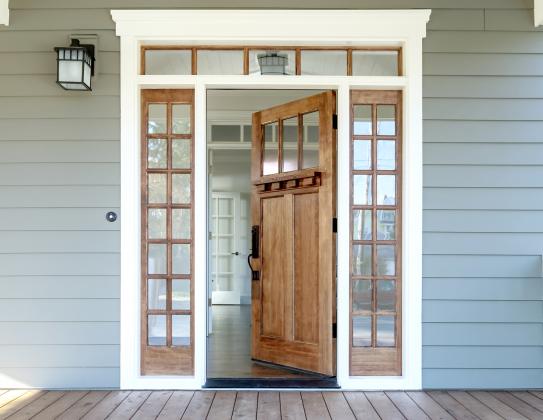Affordability, availability main worries
While Sulphur Springs and Hopkins County previously faced an affordable housing crisis, the impact of COVID-19 has left citizens more concerned than ever before about housing prices and availability.
PAYING FOR A HOME
As of July 4, 2.8 million Texans are unemployed, according to the U.S. Employment and Training Association. This accounts for 13% of the population, according to the Bureau of Labor Statistics.
While the number in Hopkins County is lower than Texas overall at 8.4%, according to the Federal Reserve Bank of St. Louis, it still represents a more than doubling for the county since the beginning of the year.
“If you don’t have a job, you can’t get a home loan because you don’t have any income,” said local home appraiser and affordable housing advocate Jed Walker. “You can always rent, but any landlord worth their salt is going to do a verification of income. And if you’ve lost your job, you don’t have any.”
For those in Hopkins County who are employed, the median annual income is $47,832, according to Data USA.
According to the National Low Income Housing Coalition (NLIHC), 74.7% of those who rent have a cost burden for housing in Hopkins County. In fact, the NLIHC finds that in Texas, $43,478 is needed annually to rent a two-bedroom home. This would represent nearly all of Hopkins’ median income.
“$40,000 is the median income,” Walker said. “That means half of people make more than that, but half of people make less than that.”
By that coin, a full half of people in Hopkins County are unable to pay rent on a two-bedroom home.
On a scale from 1-10 of being overcrowded with 1 being the least and 10 being the most overcrowded, the NLIHC rates Hopkins County at an 8.4. In Hopkins County, there are only 950 properties for rent, according to the NLIHC.
However, a recent study published in Forbes showed that citizens will continue to rent. Nearly 80% of those surveyed said they planned to postpone buying a home until later, Forbes reported.
HOME AVAILABILITY
For those that do plan to buy a home, the homebuying process is going slower, Walker said.
“Lenders are doing much more work, as are title companies,” Walker said. “A lot of folks right now are taking this opportunity to refinance their home, so there are more transactions and it’s very busy. All these refinances are really backing them up.”

Because of the housing market concerns, Walker says, those who bought their homes years ago and would usually be planning to upgrade now “don’t have any plans to go anywhere.”
“The virus has really scared off sellers,” Walker said. “When this [COVID-19] first started, we noticed people started to take their homes off the market.”
In fact, data for Hopkins County supports this. NTREIS data suggests that between 2017 and 2019, sales of homes in the $100 or less per square foot price range have halved, while sales of homes in the $200- $250 per square foot price range have doubled.
However, in 2020, homes in the $100 or less per square foot range sell quickly, whereas homes in the $200-$250 per square foot price range are more likely to remain on the market for a month or more, Walker said.
“Big houses and expensive homes will sit on the market for a long time, and there are a lot of them for sale right now,” Walker said. “Anything for $200,000 and under is going to go within a week.”
That means that home-buyers in the 75482 zip code are buying homes at either the high or low ends of the price point, but there are not many homes available in between.
“Anyone who tries to look for a home knows there’s not a lot out there,” Walker said. “Even homes… that are a little nicer than a starter home are few and far between.”
Furthermore, both Walker and the city do not see opportunities for more homes to be added in the near future.
“We just don’t see developers wanting to venture out right now, because everything is so uncertain,” said City Manager Marc Maxwell.
“A lot of financiers have been scared off financing big developments,” Walker agreed. “Big national banks are so unsure of what is going to happen in the future, so they don’t want to finance half-million dollar developments if there’s a chance the development won’t sell.
“There’s even more people moving out here and less houses for sale,” Walker speculated. “In rural America, we avoid a lot of pricing bubbles.”
Not only are first-time homebuyers looking for their lower-price starter homes, Walker said, but young adults are moving back home with their parents. Those in larger cities such as Austin may find that rural life is a safer bet during uncertain times.
Economic analysis agrees. Between 2000 and 2017, the number of 25- to 34-year-olds living with their parents doubled from 11% to 22%, according to a study by the Urban Institute. According to the Washington Post, this may have been due to recessions in 2001 and 2008 and growing costs of a college education.
Unemployment statistics show that 20- to 24-year-olds had the highest rate of unemployment in May 2020, with more than 25% of the demographic unemployed, according to the Federal Reserve Bank of St. Louis.
As the city plans to address sales tax shortages due to COVID-19 in August during budget work sessions, Maxwell said the city has “no plans” to discuss rent assistance grants, preferring instead to leave such programs to the state.
Still, said Walker, Hopkins needs to make new, affordable housing a priority.
“As bad as things are, you’ve still got to have someplace to go,” he said.


